
Satellite frequency bands
Satellite technology is developing fast, and the applications for satellite technology are increasing all the time. Not only can satellites be used for radio communications, but they are also used for astronomy, weather forecasting, broadcasting, mapping and many more applications.
With the variety of satellite frequency bands that can be used, designations have been developed so that they can be referred to easily.
The higher frequency bands typically give access to wider bandwidths, but are also more susceptible to signal degradation due to ‘rain fade’ (the absorption of radio signals by atmospheric rain, snow or ice).
Because of satellites’ increased use, number and size, congestion has become a serious issue in the lower frequency bands. New technologies are being investigated so that higher bands can be used.
L-band (1–2 GHz)
Global Positioning System (GPS) carriers and also satellite mobile phones, such as Iridium; Inmarsat providing communications at sea, land and air; WorldSpace satellite radio.
S-band (2–4 GHz)
Weather radar, surface ship radar, and some communications satellites, especially those of NASA for communication with ISS and Space Shuttle. In May 2009, Inmarsat and Solaris mobile (a joint venture between Eutelsat and Astra) were awarded each a 2×15 MHz portion of the S-band by the European Commission.
C-band (4–8 GHz)
Primarily used for satellite communications, for full-time satellite TV networks or raw satellite feeds. Commonly used in areas that are subject to tropical rainfall, since it is less susceptible to rainfade than Ku band (the original Telstar satellite had a transponder operating in this band, used to relay the first live transatlantic TV signal in 1962).
X-band (8–12 GHz)
Primarily used by the military. Used in radar applications including continuous-wave, pulsed, single-polarisation, dual- polarisation, synthetic aperture radar and phased arrays. X-band radar frequency sub-bands are used in civil, military and government institutions for weather monitoring, air traffic control, maritime vessel traffic control, defence tracking and vehicle speed detection for law enforcement.
Ku-band (12–18 GHz)
Used for satellite communications. In Europe, Ku-band downlink is used from 10.7 GHz to 12.75 GHz for direct broadcast satellite services, such as Astra.
Ka-band (26–40 GHz)
Communications satellites, uplink in either the 27.5 GHz and 31 GHz bands, and high-resolution, close-range targeting radars on military aircraft.
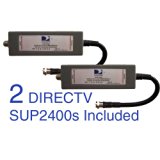
|
DIRECTV SUP-2400 2 Pack B-Band Converters BBC Module 2 Pack Speakers (DIRECTV)
|
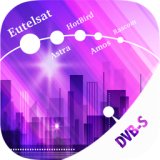
|
SatFinder Transponders Mobile Application (Kvasha Software)
|
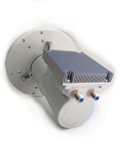
|
C2W-PLL C-band Wideband LNBF - Phase Lock Loop 2 Output LNB C2-PLL Speakers (Titanium Satellite)
|
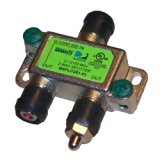
|
DirecTv MSPLIT2R1 Approved Zinwell 2-Way Wide Band SWM Splitter CE (Zinwell)
|
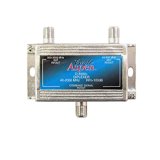
|
Satellite Diplexer Trunk Grade Pro Commercial 40 - 2050 MHz 2 GHz Diplexer Combine Signals from LNB Signal Satellite Off-Air Cable TV Signal Speakers (NAC Wire and Cables)
|





